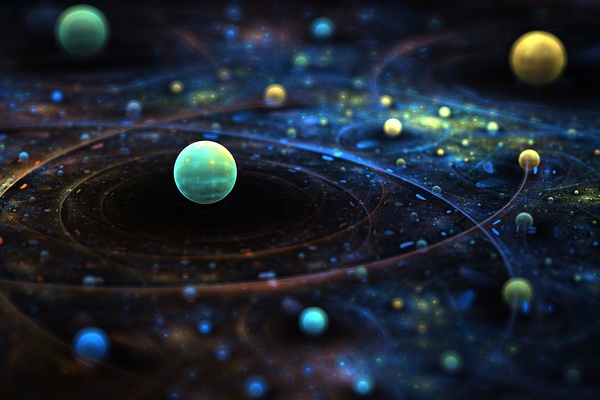(单词翻译:单击)
The most challenging and nonintuitive of all the concepts in the general theory of relativity is the idea that time is part of space. Our instinct is to regard time as eternal, absolute, immutable—nothing can disturb its steady tick. In fact, according to Einstein, time is variable and ever changing. It even has shape. It is bound up—"inextricably interconnected,"in Stephen Hawking’s expression—with the three dimensions of space in a curious dimension known as spacetime.
在“广义相对论”的众多概念中,最具挑战性的,最直觉不到的,在于时间是空间的组成部分这个概念。我们本能地把时间看做是永恒的,绝对的,不可改变的,相信什么也干扰不了它的坚定步伐。事实上,爱因斯坦认为,时间是可以更改的,不断变化的。时间甚至还有形状。一份时间与三份空间结合在一起——用斯蒂芬·霍金的话来说是“无法解脱地交织在一起”——不可思议地形成一份“时空”。
Spacetime is usually explained by asking you to imagine something flat but pliant—amattress, say, or a sheet of stretched rubber—on which is resting a heavy round object, such as an iron ball. The weight of the iron ball causes the material on which it is sitting to stretch and sag slightly. This is roughly analogous to the effect that a massive object such as the Sun(the iron ball) has on spacetime (the material): it stretches and curves and warps it. Now if you roll a smaller ball across the sheet, it tries to go in a straight line as required by Newton’s laws of motion, but as it nears the massive object and the slope of the sagging fabric, it rolls downward, ineluctably drawn to the more massive object. This is gravity—a product of the bending of spacetime.
通常,时空是这样解释的:请你想像一样平坦而又柔韧的东西——比如一块地毯或一块伸直的橡皮垫子——上面放个又重又圆的物体,比如铁球。铁球的重量使得下面的底垫稍稍伸展和下陷。这大致类似于太阳这样的庞然大物(铁球)对于时空(底垫)的作用:铁球使底垫伸展、弯曲、翘起。现在,要是你让一个较小的球从底垫上滚过去,它试图做直线运动,就像牛顿运动定律要求的那样。然而,当它接近大球以及底垫下陷部分的时候,它就滚向低处,不可避免地被大球吸了过去。这就是引力——时空弯曲的一种产物。


